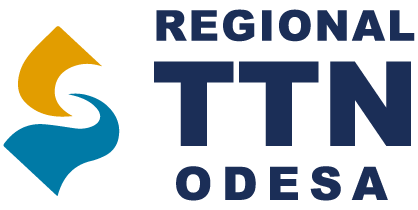First the problem, then the startup: how to launch an internal IT tool into a large market
 You have developed an internal tool for the company and it works effectively. Share it with the market. He can become successful
You have developed an internal tool for the company and it works effectively. Share it with the market. He can become successful
There is no tool on the market to solve the problem that your company faces, so are you planning to develop your own internal IT product? Chances are, you are not the only company with this problem. So why don’t you help others? Remember that you need to create an internal product with the prospect of entering the external market.
How to do it faster and what should you be prepared for? What are the steps and potential obstacles to exit?
When to launch a product on a foreign market
Inside the company, “selling” follows the same rules as “outside”. If the product slows down the work of your colleagues, they will not do charity to the detriment of their results. But still, you have a head start with internal potential customers, that is, employees of your company for whom you are creating a product – they are ready for dialogue.
Therefore, before launching the tool on foreign markets, talk to your colleagues who used the product to find out:
- what tasks take him more time;
- with whom your product is compared;
- the advantages and disadvantages of your product;
- what is lacking in competitive products.
Two development checkpoints
Investors and entrepreneurs have a concept of product-market fit – a large market ready to pay for your product.
Finding it involves experimenting with audience types, business models, and going through two milestones:
- Confirmation of the value hypothesis. Analyze what tasks your product solves, how it stands out and what the audience is willing to pay for it.
- Confirmation of the growth hypothesis. Find a scalable model to make more money from a customer than it costs to acquire them.
Where to get the first users
Determine the type of your company, analyze what your competitors are doing, and choose the optimal channels to get your first users. Create a landing page for your product and start driving traffic to your site through comments on blogs, social networks, forums.
Our company’s experience has shown that placing a product on startup selection sites and review services (for example, ProductHunt and AppSumo) has proven to be an effective way.
You can also order reviews on Youtube from profile bloggers or start your own blog to drive traffic from Google organic.
How to resolve a conflict between an internal and external customer
First, an internal customer – an employee of your company, it is to simplify his work that you created a product – will act as an investor. And these are two conflicting goals: as a customer, he wants you to make a product specifically for his questions, and as an investor, he wants you to quickly reach self-sufficiency.
Plus, experimenting with prices or traffic sources are tasks that have no value for internal customers. They take up the time and money that you and your product could allocate for the needs of your internal customers.
Then how do you prioritize tasks? Inform the customer that the investor role is more beneficial. More often than not, the global marketplace generates more revenue than using the product exclusively within the company. And to prevent resentment, first of all, perform tasks that are important for both external and internal customers.
Common mistakes in the early years of a startup
What rake can you stumble upon in the early years of your startup’s launch and operation? By preventing them, you can achieve results twice as fast.
1. Start selling as early as possible
For example, the first version of our product was free for a year. So we got active users faster, but did not understand what value it was for them, and therefore whether they were ready to pay for it.
2. Feel free to copy
Don’t reinvent the wheel when it comes to accepting payments, building a support department, or structure of selling pages. Of course, the product must be unique – this will allow you to find your market. But otherwise, you can borrow existing successful solutions. Otherwise, you risk wasting time on useless experiments. Leave all improvements for a period of stable growth.
3. Aim wide, start narrow
You must find the best tool in your market. We were also guided by this approach, but the sight was shot down. We thought that we could survive and make good money with one small product, so we stood still for a long time. But the market is developing. Any successful product eventually begins to release related services at the request of the client. And leaders inevitably turn their products into multi-functional platforms. Therefore, always look wider – create a product with a scalable perspective.
4. More experiments with tariffs
It is the most flexible, powerful, and cheapest part of the product to change. The earlier you start and the more often you experiment with tariffs, the more valuable lessons you will learn.
5. Interviews with users should be regular
At first, we did not attach any importance to this – we communicated with the audience only on incoming requests, requested product ratings on forums and blogs, but did not conduct full interviews. And only two years later they realized the mistake.
Don’t ignore regular user interviews. It’s important to listen to your audience and quickly change the product based on feedback. After all, the market and user expectations are changing rapidly. And the data that you collected a year ago could lose relevance today.
How to accelerate product growth
The last challenge is scaling. Hone your product, promote organically on external platforms, and streamline the customer journey. Here the experiments do not end, but they become less frequent and more careful. Build the potential of proven traffic sources, but keep testing new ones. Look for ways to grow quickly. For example, translate your landing pages into popular languages to get organic traffic around the world.
And most importantly, measure everything. Well-tuned analytics are the nervous system of your business. The winner is the one who quickly recognizes his shortcomings, allocates resources efficiently and develops his potential.
Source: tech.liga.net










